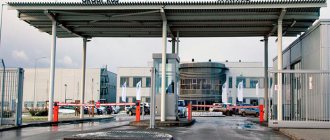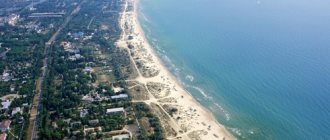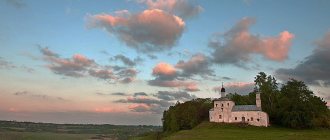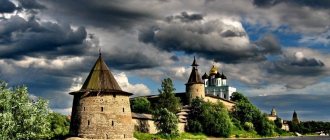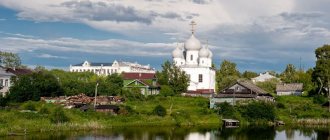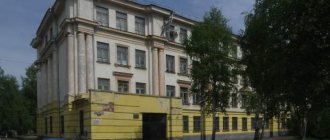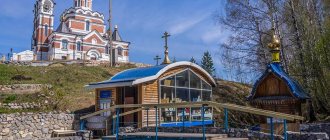The Leningrad region is located in the north-west of the Russian Federation. The terrain is represented by plains and lowlands, a significant part of which is swampy. If you carefully examine the map of the Leningrad region from a satellite, you will notice that it borders on several constituent entities of the Russian Federation, namely the regions:
- Novgorodskaya;
- Vologda;
- Pskovskaya.
In the north, the borders of the region are limited by Karelia. Also, the Leningrad region has common borders with Estonia and Finland.
The regional government is located in the city of St. Petersburg; it can be viewed on a map of the Leningrad region by district. What is atypical for our country is that it is not part of the region, but is a semi-enclave territory.
Most of the hydrographic objects in the region appeared thanks to the Baltic Sea basin. Therefore, in the north-west of the region there is a huge number of rivers and lakes. The largest rivers that can be found on the map of the Leningrad region with diagrams include:
- Pasha;
- Oyat;
- Meadows;
- Volkhov;
- •Syasya.
If you add up the lengths of all the rivers in the region, you get more than 50 thousand km. One of the most significant hydrographic objects is also Lake Ladoga - the largest in area in Europe and one of the deepest in the country.
If you zoom in on the map, you can take a closer look at the districts on the map of the Leningrad region, the cities that are part of them, as well as the streets and houses.
Districts of the Leningrad region on the map
The region is divided into 17 districts. The largest districts by area:
- Vyborg;
- Tikhvinsky;
- Luzhsky;
- Boksitogorsky;
- Podporozhsky.
The infrastructure, location of streets, roads, houses, administrative buildings, train stations and attractions in each district will be helped by a map of the Leningrad region with settlements.
More than 30 major highways pass through the region, connecting the region with St. Petersburg, the Scandinavian countries, Moscow and other Russian cities. Part of the ring road around St. Petersburg passes through the Lomonosov and Vsevolozhsk districts, which can be seen on the detailed road map of the Leningrad region.
Passenger and cargo transport is also carried out by shipping. There are such large ports in the region as:
- Vysotsk;
- Ust-Luga;
- Primorsk;
- Kronstadt;
- Vyborg.
In addition to sea transport, large river vessels sail along the Neva and Volkhov rivers. Since Soviet times, the western regions of the region have remained a border zone through which ferries with automobile transport, cargo and passenger ships pass. If you look at the map of the Leningrad region in detail, you can find all the port border cities of the region.
To get to other cities in the country and abroad, residents of the region can use the only passenger airport of international importance, Pulkovo, which is located on the outskirts of St. Petersburg.
The best areas of the Leningrad region to live
1st place – Vsevolozhsk
If you carefully consider and seriously analyze everything, it will become clear that the choice of the first place on the list is obvious. The Vsevolozhsk district of the Leningrad region is not the largest in area and not the most densely populated, but it is adjacent to St. Petersburg, which is probably why so many people live in it. Namely – 399 thousand. The area of the area is enough to experience its diversity. There are large standard new buildings not far from the metro (more than a hundred residential complexes that have just been built or are under construction)
, and neat low-rise buildings in a country style
(you will be able to live with neighbors, and in complete privacy)
.
Both rich nature (forests, mainly pine, occupy 60% of the territory)
, and rich industry
(chemical, engineering, food...)
. The latter, of course, has its effect on the environment, but in the Vsevolozhsk region you will be able to find a place where you won’t even notice it. And thanks to all these plants and factories, it will be easier to find work. And for good infrastructure and transport accessibility, choose Vsevolozhsk, Yanino and Murino. The latter even has a metro, so you can get from the region to Nevsky Prospekt in 25 minutes.
2nd place – Vyborg
The main thing is not to confuse the Vyborg district of the Leningrad region with the Vyborg district of St. Petersburg. However, this is unlikely to be possible even if its area is 7.5 thousand square kilometers. Only the Podporozhsky district is larger, but the population there is much smaller, and it is many times further from St. Petersburg, while the Vyborg district borders it in the southeast. In the west, the Vyborg region borders on Finland. This is not only convenient (if you have a foreign passport, you can go to Europe for shopping at least every weekend)
, but also beautiful - both nature and architecture here are clearly subject to European influence. Well, if, of course, we assume that nature can be subject to anyone’s influence at all! Annual sailing regatta competitions and the Window to Europe film festival attract thousands of tourists here. If you want to travel to St. Petersburg more often, choose Roshchino; to Finland, choose Svetogorsk. If you don’t want to leave the Vyborg region, choose Vyborg – a city of unique beauty for Russia, founded in the Middle Ages. However, there are also plenty of new buildings in the Vyborg region. There will definitely be at least a couple of dozen, that is, there will be plenty to choose from.
3rd place – Gatchinsky
The abundance of industrial facilities, and simply the population in the Vsevolozhsk region can confuse those who consider the Leningrad region as a place for country living. Yes, it’s not quiet and peaceful everywhere, but you need to understand that there is nothing comparable in terms of infrastructure in the region. Let's take, for example, the Gatchina region. It also neighbors St. Petersburg and can also boast both developed industry and well-preserved nature. However, the number of new buildings here is ten times less, and the level and even appearance of all are approximately the same. When choosing where to live, pay attention to Gatchina itself - a city with almost a hundred thousand inhabitants, the largest settlement in the Leningrad region, the historical center of which, by the way, is included in the UNESCO World Heritage List. Other attractions include Pushkin’s nanny’s house, the Nabokov Museum and several more beautiful estates.
4th place – Priozersky
Last year, the authorities of the Leningrad region recognized the Priozersky district as the best among all its competitors. What did they find in him? It’s a long way from St. Petersburg, 145 kilometers, but on one side is Lake Ladoga, and on the other is the Republic of Karelia with its picturesque views. Here agriculture clearly prevails over more serious industry, which means that everything is in order with the environment. Apparently there are no complaints against the local department, since even the management is so pleased with them. There are few new buildings, and only a few that still have vacant apartments. But even there, even if you find an apartment building, prepare for seasonal rather than permanent residence. Even in the largest settlement in the region, the city of Priozersk, there are only 19 thousand people, a couple of medical institutions and about a dozen educational ones. However, for whom the Priozersky district is definitely suitable for living, it is fishermen and simply lovers of water views. Its name doesn’t lie – there are really a lot of lakes, bays and rivers nearby.
5th place – Kirishsky
The Kirishi district has existed in the Leningrad region since the early 1930s. Of course, it cannot be called particularly popular or even developing. The population is steadily falling, everyone is leaving villages for cities, and from cities - for larger cities, for example St. Petersburg. It’s not close to it (from Kirishi – 176 kilometers)
, but the train will take you to Ladozhsky Station in two hours. Also, if you want to have an interesting weekend, you can go to Veliky Novgorod - its region is also nearby. The production potential of the region, as Wikipedia calls it, is built on meat and dairy farming and vegetable growing; you can also go to work in the woodworking industry. And for recreation there are many children's camps and sanatoriums. In general, the infrastructure of the area is, of course, very provincial, there are almost no new buildings, but you can find a good apartment on the secondary market without any problems.
6th place – Tosnensky
The Tosnensky district in the north borders Kolpino, and from that it is not far from Pushkin and Pavlovsk. Therefore, many developers of the area ignore Tosno itself and give preference to the boundaries mentioned above. So, firstly, you get a good suburban environment, and, secondly, you have beautiful places of historical significance nearby. You can choose from about a dozen new buildings. To say that from the Tosnensky district you can quickly get to the center of St. Petersburg is probably still a lie, but in comparison with many other heroes of our rating, it clearly wins. From Tosno to Kolpino, for example, it is only 30 kilometers. This city itself, if you suddenly decide to settle in it, is a typical Russian province, famous mainly for its football club. If you are not a fan, you can at least count on a quiet life away from the metropolis.
7th place – Kirovsky
Another district whose name can be heard both in St. Petersburg and in the Leningrad region is Kirovsky. And if the urban area can be criticized for the fact that it seems frozen in the past and is almost not developing, then the regional one would like to be praised for the same thing. Take, for example, the small city of Shlisselburg, which is part of it, with the Oreshek fortress standing on the island, with the Neva beginning here. Or the city of Kirovsk, which dates back to Soviet history. In general, it’s surprising, but there are almost more new buildings in the Kirov district of the Leningrad region than in the district of the same name in the city. Apparently, the proximity to Kolpino and the Vsevolozhsk region and, accordingly, good transport accessibility have an effect. Public transport goes directly to metro stations - say, by bus to “Dybenko Street” it takes less than an hour. If, on the contrary, you don’t want to travel anywhere, then pay attention to the local production. “Pit-Product” sausages and “Sinyavinskie” eggs are from here, so they will always be fresh in stores. It’s somehow banal to praise the ecology of the area located on the shores of Lake Ladoga, but just in case, let’s note that it is very good here.
8th place – Lomonosovsky
Lomonosovsky district is a unique municipal entity for the Leningrad region, whose governing bodies are located in another subject of the Federation. Moreover, they are located in the city of Lomonosov, which, in turn, is not part of the Lomonosovsky district, but is part of the Petrodvortsovy district of St. Petersburg. And on its territory there is a semi-enclave in the form of Sosnovy Bor. The layout is confusing, but it shouldn't stop you from enjoying this place. If infrastructure, transport accessibility and the ability to choose from several new buildings are of paramount importance to you, then take a closer look at the eastern part of the area - the one that is closer to St. Petersburg. If good ecology and silence are more important to you (although in the east, objectively speaking, it’s not that loud!)
, forward to the northwest, to the shores of the Gulf of Finland. Whatever you choose, keep in mind that provincial life in the full sense of the phrase awaits you. There is not even a single city in the region, only towns and villages.
9th place – Volosovsky
In the south, the Lomonosovsky district borders the Volosovsky district, so in our list the second one turned out to be slightly lower than the first. From, in fact, the city of Volosovo to St. Petersburg is 43 kilometers, but Gatchina is very close. Have you noticed, by the way, that the lower we go in the rating, the more we begin to value good transport accessibility and the ability to get to St. Petersburg relatively quickly? Given that the population of the entire region is about 50 thousand people, it cannot be called particularly independent (well, what kind of infrastructure can you count on in a city with 10 thousand inhabitants?)
, much less acting only in conjunction with St. Petersburg
(Volosovo is still not so close to the city on the Neva as to be completely dependent on it)
. In light of all this, it is not surprising that local developers are attracting clients with dachas rather than apartments, temporary housing rather than permanent housing. All you need is to bring amenities to a decent level, borrow the appearance from European suburbs, and not raise prices - and then purchasing real estate in the Volosovsky district will be a really good decision.
10th place – Volkhovsky
Well, the finalist of our top ten is the Volkhov district of the Leningrad region, just like many others, located on the shore of Lake Ladoga. Area – just over five thousand square kilometers (sixth place in the region)
, population - 89 thousand people
(oddly enough, also sixth place)
, interestingness - there are no exact data, but the number is clearly small. The area cannot boast of being close to St. Petersburg, and therefore its infrastructure is no different. Industry and production on its territory are the same as in the region in general - woodworking, food, agriculture. The ecology is generally good, but, objectively speaking, few areas of the region can complain about it. Developers pay almost no attention to the Volkhov district. However, only a person who has never seen this lake can pass by and not at all appreciate the area, most of which faces Lake Ladoga.
Map of the Leningrad region with cities and villages
There are more than 30 large cities in the region, all settlements, both large and small, can be seen on the map of the Leningrad region with cities and villages. The most significant settlements in the region in terms of area and number of people living are:
- Vyborg;
- Tikhvin;
- Gatchina;
- Sertolovo;
- Pinery;
- Volkhov;
- Kingisepp.
Almost all cities have characteristic “northern” architecture and many historical monuments. Architecture and identity of the local population. Thousands of tourists arrive in the region every day who want to see the most beautiful architectural and historical monuments in Russia, which are indicated on the map of the Leningrad region with villages. The main attractions and most interesting places in the region:
- Ulyanovka village – Sablinskie caves;
- Belogorka village – Eliseev’s estate;
- Nevsky Parkleskhoz village - the ancient Church of the Intercession;
- Priozersk – Konevets Island;
- Vyborg - Mon Repos;
- The city of Gatchina is a museum-reserve.
The list of attractions can be endless. If you go to visit this historical region of the country, use Yandex maps of the Leningrad region, which will become an indispensable assistant on your trip.
Worst areas
Residents of St. Petersburg can spend hours proving to you that, although Moscow is larger than their beloved city, and has a larger population, in general it is no better than it. What’s more, it’s worth looking at any modern artist to understand that popular popularity is not always an indicator of high quality. However, in the case of the districts of the Leningrad region, everything works exactly like this - the more popular the district, the better it is (however, the reverse logic is also true - the better the district, the more popular it is, but this is perhaps a banality)
.
A large population is not only of interest to developers, but also good infrastructure and attention from the authorities and other powers that be (for example, various large enterprises)
, which is especially important in the province.
The remaining districts of the Leningrad region can be blamed for their dubious ecology (for example, several settlements in the Kingisepp district were recognized as contaminated as a result of the accident at the Chernobyl nuclear power plant)
, for poverty
(according to research, a kind of “leader” in this indicator is Luzhsky)
, for the distance from St. Petersburg
(it’s about three hours by car from Tikhvin)
... But their common, and therefore the main problem is provincialism, the lack of any -or interest. While it is still possible to build dachas in these areas, no one is rushing here with large new buildings. This means that their chances for development are less and less. Green forests, clean waters, peace and quiet - this is great. But, alas, not when this is the only thing this or that place can offer us.
Georgy Paradny
Economy and industry of the Leningrad region
The region's economy is represented by many industries. Hunting, fishing and forestry have always been and remain traditional for the region. The leading positions are occupied by such sectors of the economic sphere as:
- transport and communications;
- manufacturing;
- construction;
- energy.
A large number of enterprises in the light, food and processing industries operate in the region. Here they sew shoes, clothes, and produce plastic and metal products.
A great contribution to the region’s economy comes from investors who see great opportunities in the region for developing large businesses and opening large-scale investment projects.


